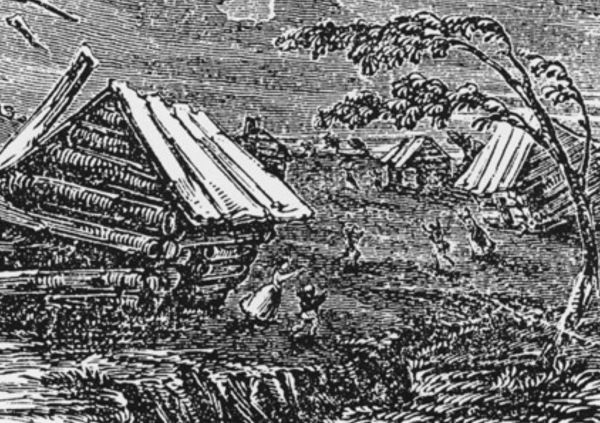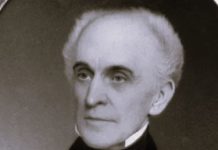A series of the most remarkable earthquakes of 1811 in the history of the Mississippi Valley. The earthquake began on the night of November 16, 1811, continued for several months, and finally ended with the destruction of Caraccas, Venezuela, in March. While the center of the earlier disturbance appears to have been in the vicinity of New Madrid, in Southeast Missouri, its minor effects were felt throughout a wide extent of the country, especially in the settled portions of Illinois.
When considering the United States since European settlers, the earthquakes of 1811 are among the biggest. The ground shifted and rose at the beginning of the earthquake, bending trees until their branches entwined and creating deep fissures in the earth; landslides swept down the steeper bluffs and hillsides; vast tracts of land were raised; and still, larger tracts sank and were submerged under water that surfaced through fissures or craterlets. Large Mississippi River waves overturned numerous boats and carried others high up the coast; steep banks gave way and fell into the river; sandbars and points of islands crumbled; entire islands vanished; surface rupturing did not happen, though.
Contemporaneous history states that, in the American Bottom, then the most densely settled portion of Illinois, the results were very perceptible. The convulsion caused cracks in the walls of Mr. Samuel Judy’s brick home, a pioneer settler on the eastern border of the bottom, close to Edwardsville, Madison County. These cracks remained visible for over two generations.
Gov. John Reynolds, then a young man of 23, living with his father’s family in what was called the “Goshen Settlement,” near Edwardsville, in his history of “My Own Times,” says of it: “Our family was all sleeping in a log cabin, and my father leaped out of bed, crying out, ‘The Indians are on the house. The battle of Tippecanoe had been recently fought, and it was supposed the Indians would attack the settlements. Not one in the family knew at that time it was an earthquake. The next morning, another shock made us acquainted with it.
The cattle came running home bellowing with fear, and all the animals were shocked. Our house cracked and quivered, so we were dreadful it would fall to the ground. Many chimneys were thrown down in the American bottom, and the agitation of the building at Cahokia caused the church bell to ring. It is said a shock of an earthquake was felt in Kaskaskia in 1804, but I did not perceive it.”
Owing to the sparseness of the population in Illinois at that time, little is known of the effect of the convulsion of 1811 elsewhere, but there are numerous “sink-holes” in Union and adjacent counties between the forks of the Ohio and Mississippi Rivers, which probably owe their origin to this or some similar disturbance. “On the Kaskaskia River below Athens,” says Governor Reynolds in his “Pioneer History,” “the water and white sand were thrown up through a fissure of the earth.”
If you compare the 1964 Alaska earthquake and the 1906 San Francisco earthquake, the area of intense shaking linked to these shocks is two to three times larger. Based on the widespread region of perceptibility (5,000,000 square kilometers), the extensive area of damage (600,000 square kilometers), and the intricate physiographic alterations that transpired,.
General ground warping, ejections, fissuring, major landslides, and the collapsing of stream banks were the characteristics of the meizoseismal area. Furthermore, subsidence produced Lake St. Francis, a 64-kilometer-long and 1-kilometer-wide body of water in eastern Arkansas. Sand and coal were launched from fissures in the marshland near the St. Francis River, elevating the water level by eight or nine meters.
Read More: The Great Hayward Earthquake of 1868







